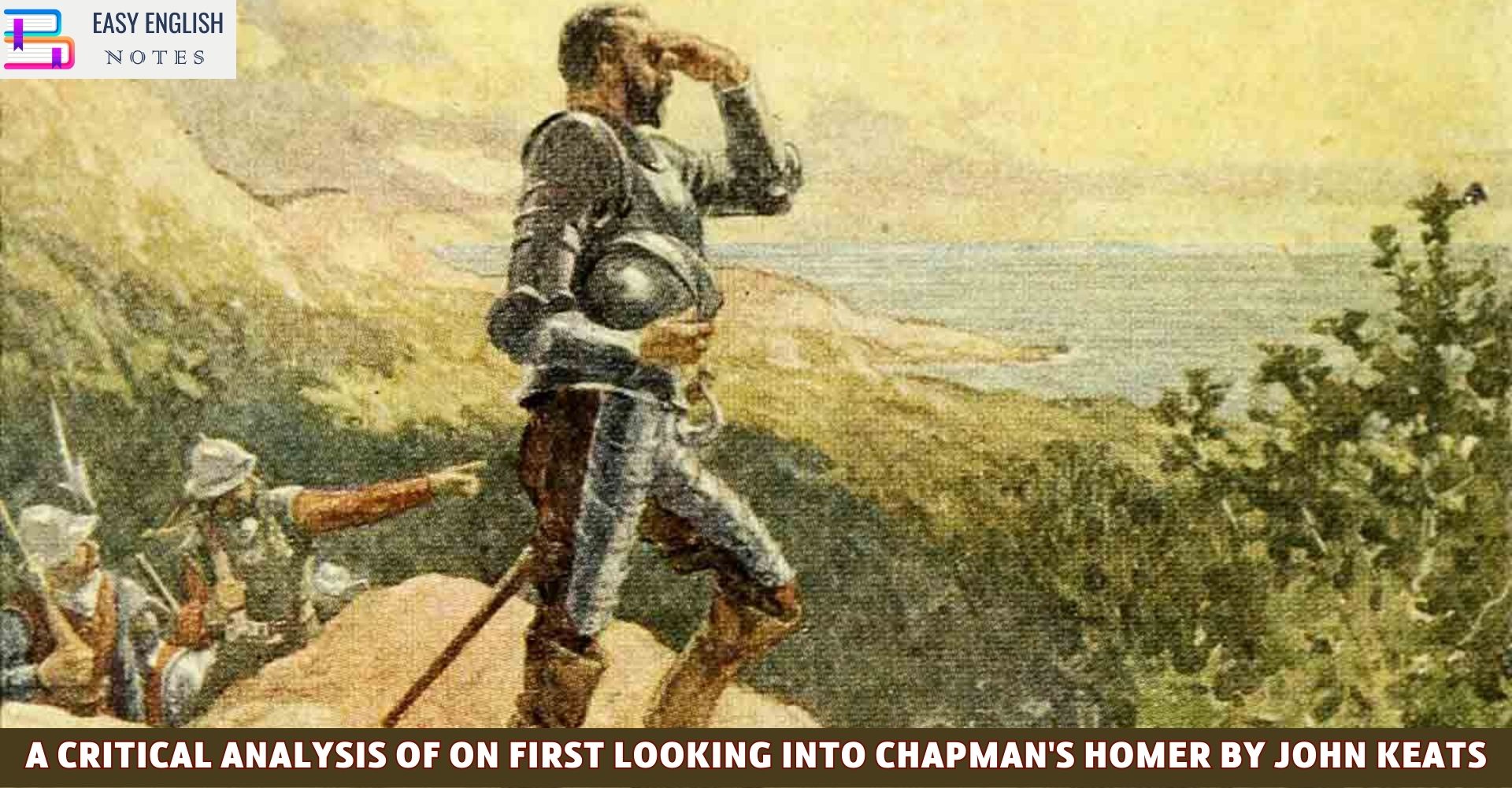“Upon First Gazing at Chapman’s Homer” is a brilliant sonnet penned by the esteemed John Keats. Sonnets, being concise poems with fourteen lines in iambic pentameter, focus on conveying a single thought or idea. There are two well-known variations: the Petrarchan, also known as Italian, and the Shakespearean, or English sonnet. In the Petrarchan sonnet, the fourteen lines are split into two parts: the octave (eight lines) and the sestet (six lines). In contrast, the Shakespearean sonnet is divided into three quatrains, followed by a concluding couplet. The sonnet in question belongs to the Petrarchan form, where the poet expresses his profound reaction upon reading Chapman’s translation of Homer’s renowned works.
Keats, the perceptive traveler, has journeyed far and wide, visiting various states and kingdoms. During his voyages, he encountered many western islands where poets devoutly revered Apollo, the sun God of Greek and Roman mythology. Tales of a grand place ruled by Homer’s wisdom and artistry often reached his ears. However, while Chapman’s translation brought the essence of Homer’s work into English, Keats believes it lacked the serene grace of the original. To illustrate his sentiment, the poet likens himself to an observer of the sky, witnessing the appearance of a new planet. This is how Chapman’s translation felt—like a celestial event.
In a clever allusion, Keats mentions Cortez, not the Spanish explorer and conqueror, but a companion named Balboa, who gazed upon the Pacific Ocean from a peak in Darien, the Isthmus of Panama. Like the mighty Cortez, Balboa’s spirit overflowed with vitality. Keats compares the keenness of his own eyes to that of an eagle’s, as he too intently contemplated the vast Pacific Ocean from the same peak. Balboa was accompanied by numerous comrades who stared at one another in utter astonishment.
Also Read :
- Compare Hamlet with Macbeth, Othello and other Tragedies
- “The Pardoner’s Tale” is the finest tale of Chaucer
- Prologue to Canterbury Tales – (Short Ques & Ans)
- Confessional Poetry – Definition & meaning
This poem may lack the sensual descriptions commonly found in Keats’ later works, yet it showcases his great promise and potential. The depth of thought and evocative language evident here foreshadow the brilliance that would characterize his mature poetry. Keats’ ability to evoke emotions and paint vivid mental pictures marks him as a true poetic master.
As we delve into this sonnet, we notice a departure from Keats’ mature style, which often indulged in sensuous descriptions and rich imagery. Nevertheless, even in this early work, his genius shines through, revealing the seeds of greatness that would blossom in his later poems.
The metaphorical language employed by Keats is profound, drawing parallels between literary exploration and the awe-inspiring wonders of the natural world. Just as the appearance of a new planet in the sky captivates an observer, so does Chapman’s translation of Homer’s epic verses enrapture the poet’s mind. It is as if the translation itself was a celestial revelation, an unveiling of a magnificent new world.
Moreover, Keats cleverly interweaves historical allusions to Cortez and Balboa, adding a layer of depth to the poem. By likening himself to these adventurous figures who gazed upon uncharted territories, he emphasizes the profound impact of discovering Chapman’s rendition of Homer’s works. The poet’s eyes become instruments of discovery, much like those of the explorers who ventured into the unknown, seeking new horizons.
Through this sonnet, Keats not only contemplates the power of literature but also ponders the transformative nature of artistic experiences. The encounter with Chapman’s Homer leaves an indelible mark on the poet’s soul, expanding his intellectual and emotional horizons. It reflects Keats’ belief in the transcendent power of art to transport us beyond the confines of reality into realms of imagination and insight.
Although this sonnet may not boast the sensuality of “Ode to a Nightingale” or the vibrant imagery of “Endymion,” it bears witness to Keats’ boundless potential as a poet. It serves as a stepping stone in his artistic journey, hinting at the profound themes and poetic brilliance that would flourish in his later masterpieces.
In conclusion, “On First Looking into Chapman’s Homer” is a testament to Keats’ poetic prowess and visionary spirit. Through a clever fusion of literary and natural imagery, he conveys the transformative power of literature and the endless possibilities of artistic exploration. As we read these eloquent verses, we are reminded of the eternal allure of great literature, which continues to inspire and uplift souls across generations. Keats’ ability to encapsulate profound emotions in concise and artful language solidifies his position as one of the most celebrated poets in the English literary canon.
PLEASE HELP ME TO REACH 1000 SUBSCRIBER ON MY COOKING YT CHANNEL (CLICK HERE)











